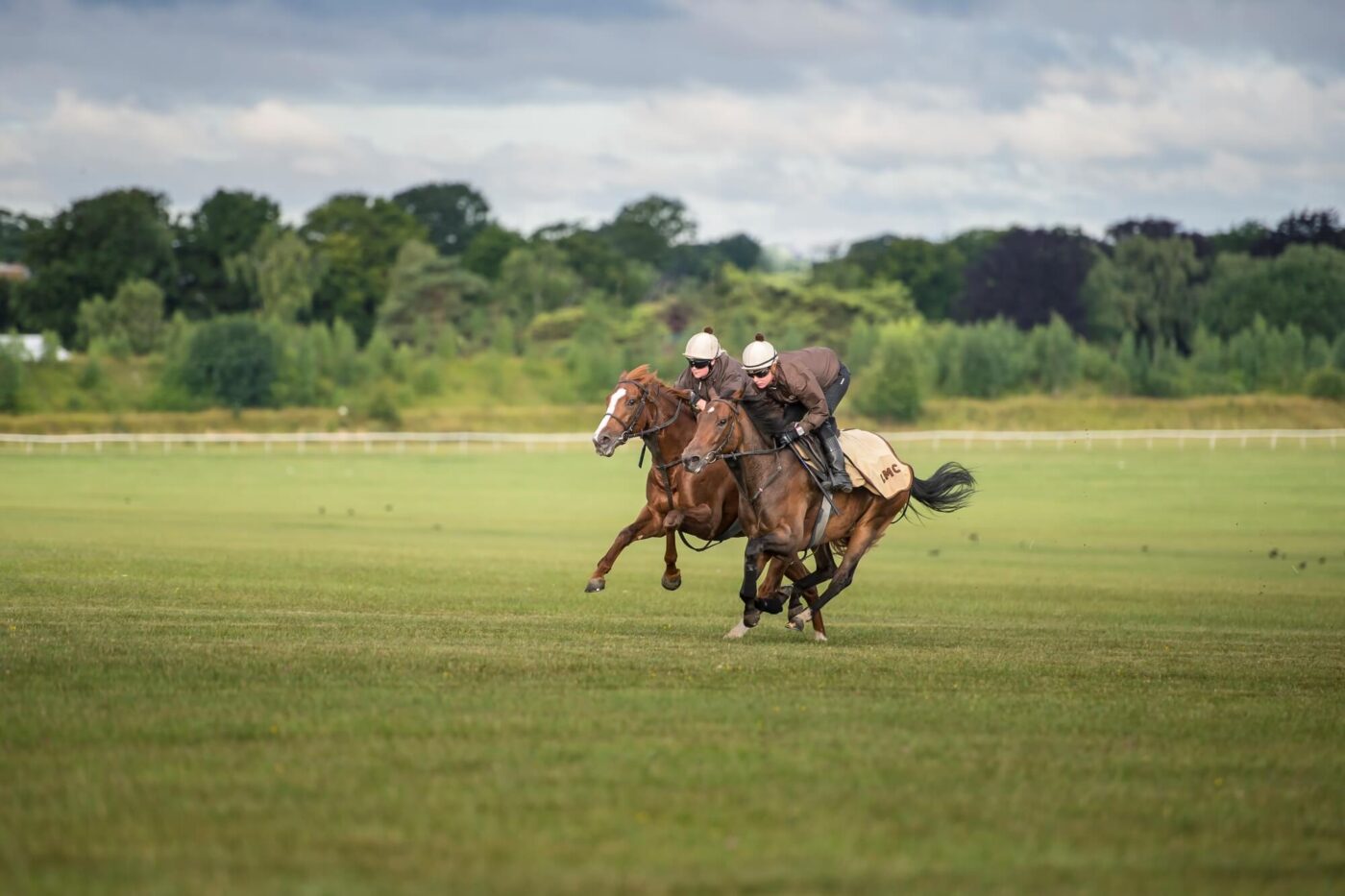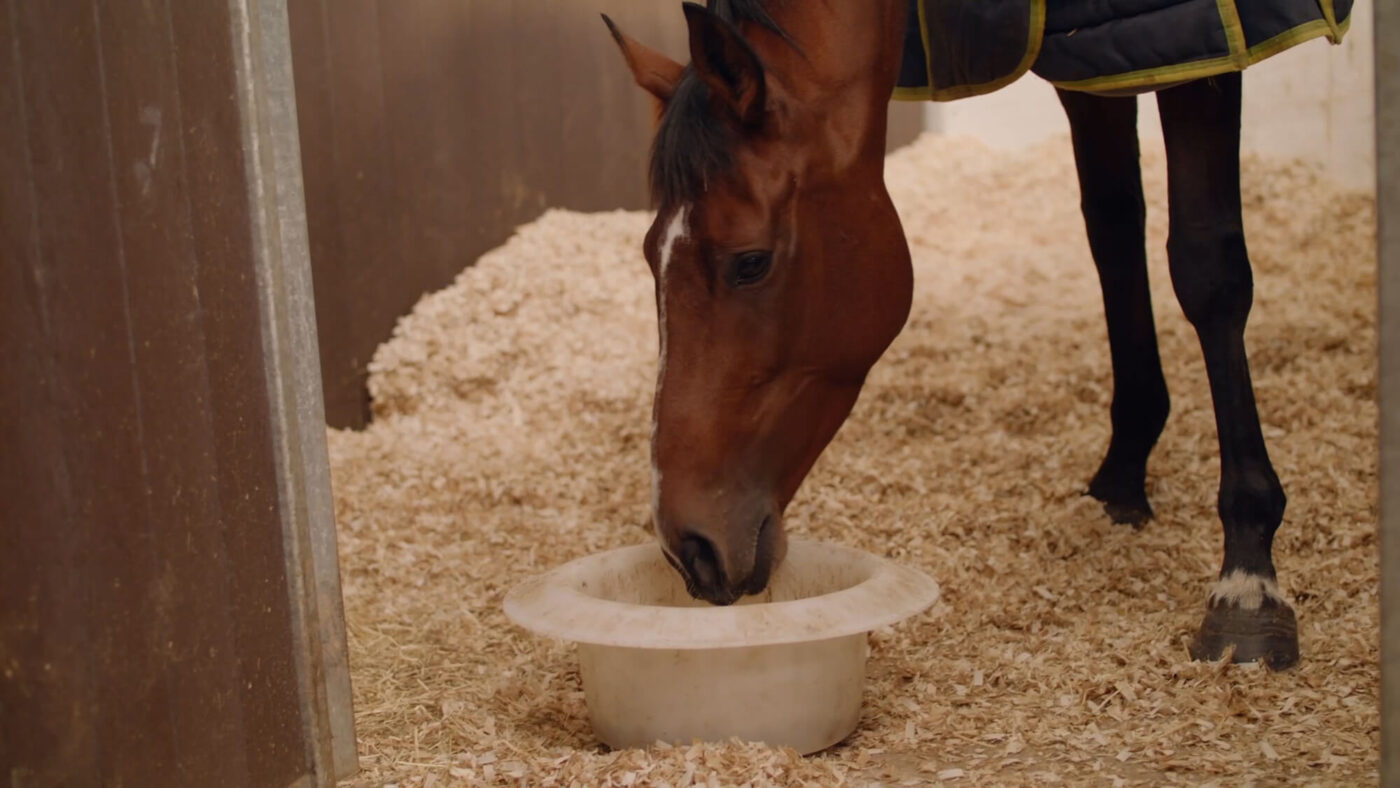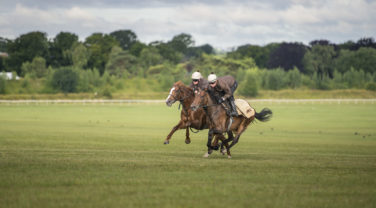Feeding the ex-racehorse
The process of taking a racehorse out of training is often referred to as “letting down” which really refers to the process of the horse’s body and mind transitioning from one of an athlete, to that of a leisure or even breeding animal. In a literal sense, the horse will lose the very tight, lean greyhound-like physique and develop more of an expanded belly. There is no set timeframe; some horses take longer to let down than others and many factors contribute to the time it takes including the time of year. It can often take a year for the change to be noticeable or for a mare to conceive if she is going to stud. The general rule with making the transition is not to rush – the more time you can take, the greater the chance of success.

What to feed an ex-racehorse?
In relation to the diet, try to establish what the horse’s current diet is as it will give you some idea of the amount of energy it is taking to keep them in the condition they are in. In most cases, it is likely to be necessary to go back to basics starting with ad-lib forage and then gradually introduce new feeds over a week to ten days. If you feed ad-lib forage, try to calculate how much the horse is actually consuming as this will be useful information to know if for any reason your horses doesn’t start to gain weight.
The typical diet of the horse in race training is usually relatively high in starch. Even though many racing rations are lower in starch than they were 20 years ago, they often still exceed levels that are likely to cause ulcers (2grams per KG bodyweight per day) and are almost certain to exceed levels that have a negative impact on the microbial population in the gut. If you would like to calculate the level of starch in your horse’s ration try our starch calculator tool.
It takes time for the microbial population to adjust to a new, higher fibre diet and there are things that can be done to help the transition and promote a healthier digestive system. Live yeast is an approved additive for horses and has been shown to promote improved fibre digestion. It is included in many balancers and feeds but for 2 to 3 months it is worth adding a more concentrated source, such as a supplement, to the ration of an ex-racehorse making the transition to a riding horse.
Adding Prebiotics to Your Horse’s Diet
Alongside yeast, prebiotics are another form of digestive aid and useful to add to the ration at this time. One study showed that FOS prebiotics helped address acidity in the horse’s stomach by stimulating the bacteria that mop-up acid whereas MOS prebiotics are known to latch on to harmful bugs which are then carried out of the gut. These are all ingredients worth looking for in supplements that can be used for the longer term if needed but are particularly helpful for the first 2 to 3 months whilst the horse adjusts to a new lifestyle.

Feeding High Quality Fibre to Your Ex-Racehorse is Key
Not all thoroughbreds or ex-racehorses have hot temperaments, but clearly many do which is why the stereotype exists. For condition without the fizz, the key is to use high quality fibre and oil as energy source such as in Dengie Alfa-A Oil or Dengie Performance Fibre. Fibre is supplied by many different ingredients ranging from straw and grass hay at the lower end of the energy level spectrum through to sugar beet, soya hulls and alfalfa at the high end. The energy each of these feedstuffs provides is largely determined by their digestibility – in other words, how quickly the horse can break them down and release the energy they contain. For poor doers it is beneficial to use the more digestible forms of fibre so they can get more from fibre in their ration.
Feeding Recommendations If Your Ex-Racehorse has Gastric Ulcers
When high quality fibre is fed alongside oil such as in Alfa-A Oil, it can provide as much energy as a conditioning mix or cube but with much lower levels of starch which is why they are less likely to result in over-excitability. This also means they are more suitable for those with gastric ulcers. It has been well-documented over the last 25 years that high numbers of racehorses have ulcers and this is clearly something to be aware of when feeding an ex-racehorse. Whilst diet is a key contributing factor, it is increasingly being recognised that stress is too. This is why just turning out to grass doesn’t mean the ulcers will resolve. In many horses still exposed to some form of stress, an improvement in the severity of ulcers rather than complete resolution may be all that is possible even with medical intervention. This is a really important consideration when taking on an ex-racehorse.
Clearly there are things you can do to reduce the risk of and help the management of a horse with ulcers but don’t just assume turning out 24/7 will do the trick:
- Some ex-racehorses may not be happy in the field if it isn’t something they’ve been used to and turning out may cause additional stress.
- A high fibre diet is key as it provides more chew time which increases saliva production and it is saliva that is the horse’s own buffer to acidity in the stomach.
- Using high oil feeds like micronized linseed rather than those high in starch such as cereals is key if more energy is required.
- Ensuring the horse has consumed some forage in the 20-25 minutes before riding is also helpful as it provides a fibrous mat in the stomach that helps to reduce acid-splash.
- Several studies have shown that alfalfa provides more buffering than grass-based forages so adding some to the bucket feed is advocated.
The other key area to consider for promoting condition without fizz is how much forage the horse is consuming. Poor doers can be fed forage ad-lib – there is no reason to limit the amount fed as you want the horse to put on weight. The more energy the horse can get from forage the less reliance there is on the bucket feed which will ultimately help to keep starch levels, and therefore the fizz factor, down. Using the digestive aids will also help the horse to get more from the forage, again reducing reliance on the bucket feed.
Typically, earlier cut forages are more digestible and therefore more likely to help promote weight gain. Wrapped hays can be a good option for those with ulcers as they are often softer than hay and if they are quite dry before being wrapped, they won’t have fermented and so are not acidic to the same degree that a traditional haylage would be. This is beneficial if ulcers are a concern.
Lastly, don’t forget to check the health of other areas of the digestive system too. If the horse can’t chew effectively their ability to digest their feed is compromised and weight gain will take longer so a professional dental check is well worth investing in. Similarly, checking their worm burden is also important as weight gain will be slow progress if the horse has a high worm burden.
If you would like more advice and guidance on what to feed your ex-racehorse contact the feedline team.
Lou Robson, Thoroughbred Dressage
“Promoting condition safely is one of the hardest and toughest challenges that we face when retraining racehorses. It’s very easy to see a ‘just out of racing’ fit and lean horse and want to feed them up. A ‘whole horse’ approach is key, and that’s why at Thoroughbred Dressage we work closely with the Dengie Nutrition team.”

Credit: Alison Parker Photography
“Our primary concern is supporting and promoting gut health. Often it’s not just their body condition and top line that we are looking to develop, but we may also need to look at improving hoof quality too. I choose to feed Dengie to all our horses as it ensures that they are getting a highly nutritious fibre-based diet to help and support their development into their second career. Since making the change to Dengie I have seen a vast improvement in the condition of my horses and also their temperaments; they are happy, calm and content in themselves.”



